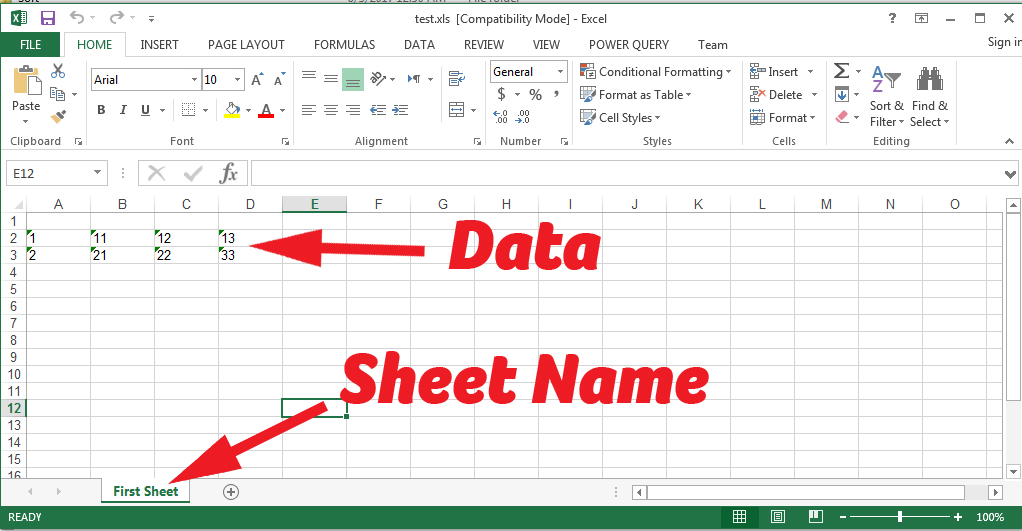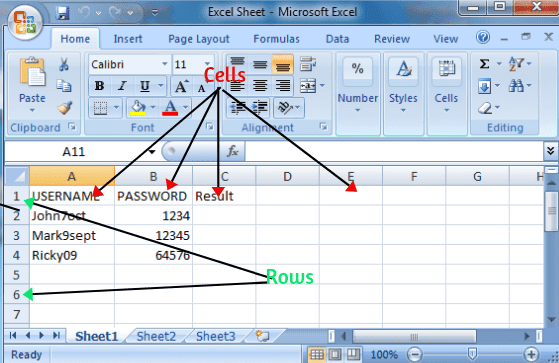Adding Excel Sheets Made Easy with Java

Excel is synonymous with data management, offering a familiar interface for users to record, analyze, and manipulate data across numerous industries. However, with the rise of automation and integration needs, many developers seek ways to enhance Excel with more powerful and programmable tools. One such tool is Java, a versatile language known for its portability, scalability, and robust libraries for data handling.
Why Java for Excel Manipulation?

Java excels (no pun intended) in several ways when it comes to working with Excel files:
- Versatility: Java's extensive libraries like Apache POI, JExcelAPI, and others facilitate seamless Excel file manipulation.
- Scalability: Applications built with Java can handle large datasets without performance degradation.
- Integration: Java applications can easily integrate with various database systems, making data import and export straightforward.
💡 Note: While this post focuses on adding Excel sheets, Java can also be used for creating charts, applying styles, and much more within Excel files.
Setting up the Environment

Before diving into the code, ensure your development environment is ready:
- Install Java Development Kit (JDK) from the Oracle website. JDK 8 or higher is recommended.
- Choose a Java Integrated Development Environment (IDE) like Eclipse, IntelliJ IDEA, or NetBeans.
- Include the Apache POI library in your project:
- Download the latest stable release from the Apache POI website.
- Add the .jar files to your project's classpath or include them in your build system (Maven, Gradle, etc.)
Adding an Excel Sheet Using Java

Here's how to add a new worksheet to an existing Excel file using Java with Apache POI:
import org.apache.poi.ss.usermodel.*;
import org.apache.poi.xssf.usermodel.XSSFWorkbook;
import java.io.*;
public class AddExcelSheet {
public static void main(String[] args) {
try (Workbook workbook = WorkbookFactory.create(new File("example.xlsx"))) {
Sheet sheet = workbook.createSheet("New Sheet");
// Example: Add some data to the new sheet
Row row = sheet.createRow(0);
Cell cell = row.createCell(0);
cell.setCellValue("Hello, New Sheet!");
// Write the workbook back to the file
try (FileOutputStream fileOut = new FileOutputStream("example.xlsx")) {
workbook.write(fileOut);
}
} catch (IOException e) {
e.printStackTrace();
}
}
}
Above code does the following:
- Opens an existing Excel file (example.xlsx).
- Creates a new worksheet named "New Sheet".
- Optionally, adds some data to the first cell in the first row of the new sheet.
- Saves the workbook, overwriting the original file with the new sheet included.
📝 Note: Always backup your Excel files before manipulating them with Java to avoid data loss.
Handling Multiple Sheets and Large Files

When working with large or complex spreadsheets, you might want to consider several techniques:
- Stream Processing: Utilize POI's streaming API for very large files to reduce memory usage.
- Sheet Management: Use workbook.getSheetAt(int index) and workbook.getSheetName(int index) to access or rename existing sheets.
- Data Safety: Employ try-with-resources to ensure all resources are closed properly, even if an exception occurs.
Here's an example demonstrating sheet management:
import org.apache.poi.ss.usermodel.*;
import org.apache.poi.xssf.usermodel.XSSFWorkbook;
import java.io.*;
public class ManageSheets {
public static void main(String[] args) {
try (Workbook workbook = WorkbookFactory.create(new File("example.xlsx"))) {
int sheetIndex = workbook.getSheetIndex("Existing Sheet Name");
if (sheetIndex != -1) {
// Rename existing sheet
workbook.setSheetName(sheetIndex, "New Sheet Name");
// Create a new sheet and set its position
Sheet newSheet = workbook.createSheet("New Added Sheet");
workbook.setSheetOrder("New Added Sheet", sheetIndex + 1);
}
try (FileOutputStream fileOut = new FileOutputStream("example.xlsx")) {
workbook.write(fileOut);
}
} catch (IOException e) {
e.printStackTrace();
}
}
}
The above code shows how to rename an existing sheet and insert a new one at a specific position.
Optimization Tips

- Use SXSSFWorkbook: For writing very large spreadsheets that don't fit into memory.
- Avoid Unnecessary Row/Cell Creation: Create rows and cells only when data is to be added.
- Bulk Operations: Use formula values, cell styles, and cloning where applicable to reduce operations.
In conclusion, Java offers a robust set of tools for Excel manipulation, allowing developers to automate and enhance spreadsheet operations. By utilizing libraries like Apache POI, developers can seamlessly integrate Excel functionality into their applications, improving productivity and data handling efficiency. Remember to consider the file size, the complexity of the data, and always back up your Excel files before processing.
What are the advantages of using Java for Excel manipulation?

+
Java provides object-oriented structure, cross-platform compatibility, strong typing, and a rich ecosystem of libraries like Apache POI, making it efficient for handling complex data operations in Excel.
Can I use Java for Excel files other than .xlsx?

+
Yes, Apache POI also supports reading and writing .xls files (Excel 97-2003 format) with its HSSF (Horrible SpreadSheet Format) component, though it’s less efficient for large files due to memory limitations.
How do I handle read-only or protected Excel files in Java?

+
Apache POI doesn’t support password-protected files directly, but you can strip out the password protection from an unprotected copy of the file first or consider third-party tools or libraries that provide this functionality.